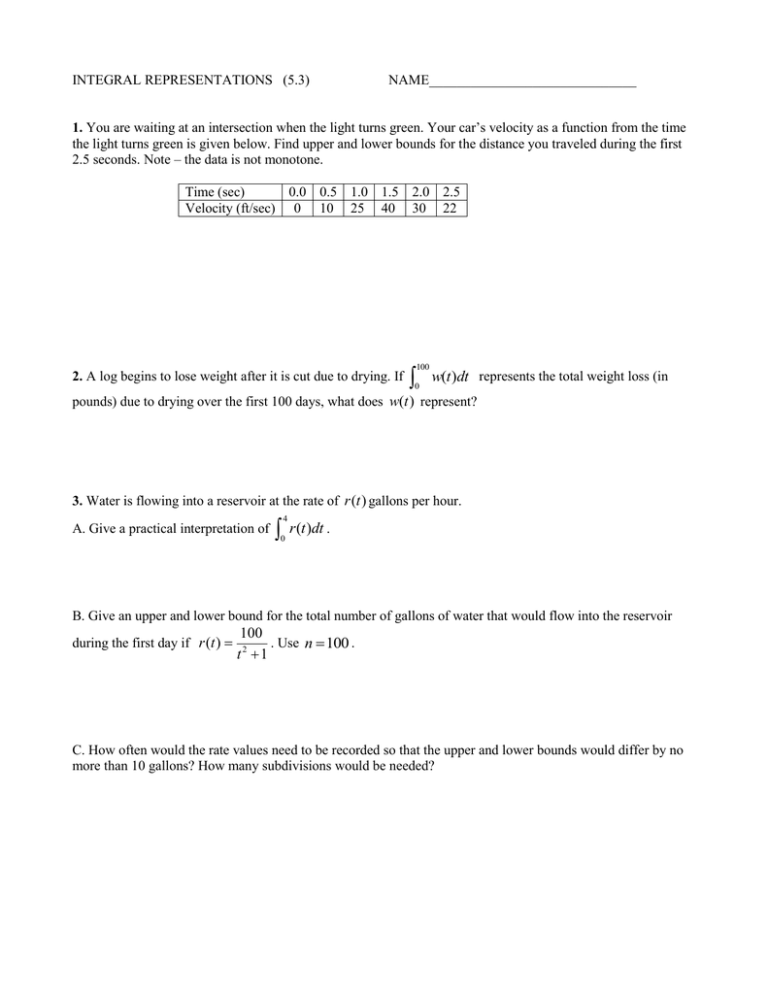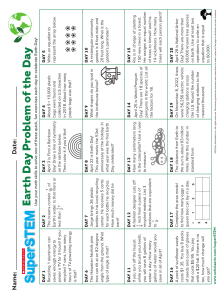INTEGRAL REPRESENTATIONS (5.3) NAME______________________________
advertisement

INTEGRAL REPRESENTATIONS (5.3) NAME______________________________ 1. You are waiting at an intersection when the light turns green. Your car’s velocity as a function from the time the light turns green is given below. Find upper and lower bounds for the distance you traveled during the first 2.5 seconds. Note – the data is not monotone. Time (sec) 0.0 0.5 1.0 1.5 2.0 2.5 Velocity (ft/sec) 0 10 25 40 30 22 2. A log begins to lose weight after it is cut due to drying. If 100 0 w(t )dt represents the total weight loss (in pounds) due to drying over the first 100 days, what does w(t ) represent? 3. Water is flowing into a reservoir at the rate of r (t ) gallons per hour. A. Give a practical interpretation of 4 0 r (t )dt . B. Give an upper and lower bound for the total number of gallons of water that would flow into the reservoir during the first day if r (t ) 100 . Use n 100 . t2 1 C. How often would the rate values need to be recorded so that the upper and lower bounds would differ by no more than 10 gallons? How many subdivisions would be needed? 4. The density of trees in a particular rectangular plot of forest is given by ( x ) measured in hundreds of trees per square mile. If x represents the number of miles from the eastern edge, set up a definite integral to represent the total number of trees in this plot. North 100 miles 400 mile trillions of barrels per year 5. The projected rate of oil production in a particular country up to the year 2020 is shown below. If this projection is correct, estimate the amount of oil that would be produced between 2000 and 2015. Determine the average rate of production during that time interval. 30 25 20 15 10 5 0 1975 1985 1995 years 2005 2015



